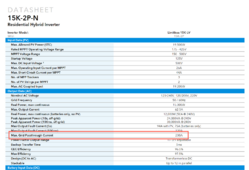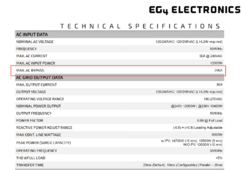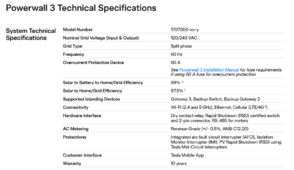While I am doing my research on whole-home backup, I found that only Sol-Ark 15K and EG4 18kPV are capable of doing 200A bypass or passthrough.


Not sure what's the difference between bypass or passthrough but all the other inverters of ESSs seem to rely on a smart distribution panel like Gateway, IQ combiner, or aGate for bypassing.
A friend told me that the max. AC input is 48A in order to pass city inspection, and the overcurrent protection device is usually 1.25 times larger than the AC input.
That explains why the Tesla Powerwall 3 has a 60A overcurrent protection device.

If the max. AC input is limited to 48A to pass city inspection, wouldn't 200A bypass capability make it fail the inspection?
Without a smart distribution panel, can Sol-Ark 15K and EG4 18kPV utilize existing third-party PV inverters in outages?


Not sure what's the difference between bypass or passthrough but all the other inverters of ESSs seem to rely on a smart distribution panel like Gateway, IQ combiner, or aGate for bypassing.
A friend told me that the max. AC input is 48A in order to pass city inspection, and the overcurrent protection device is usually 1.25 times larger than the AC input.
That explains why the Tesla Powerwall 3 has a 60A overcurrent protection device.

If the max. AC input is limited to 48A to pass city inspection, wouldn't 200A bypass capability make it fail the inspection?
Without a smart distribution panel, can Sol-Ark 15K and EG4 18kPV utilize existing third-party PV inverters in outages?


